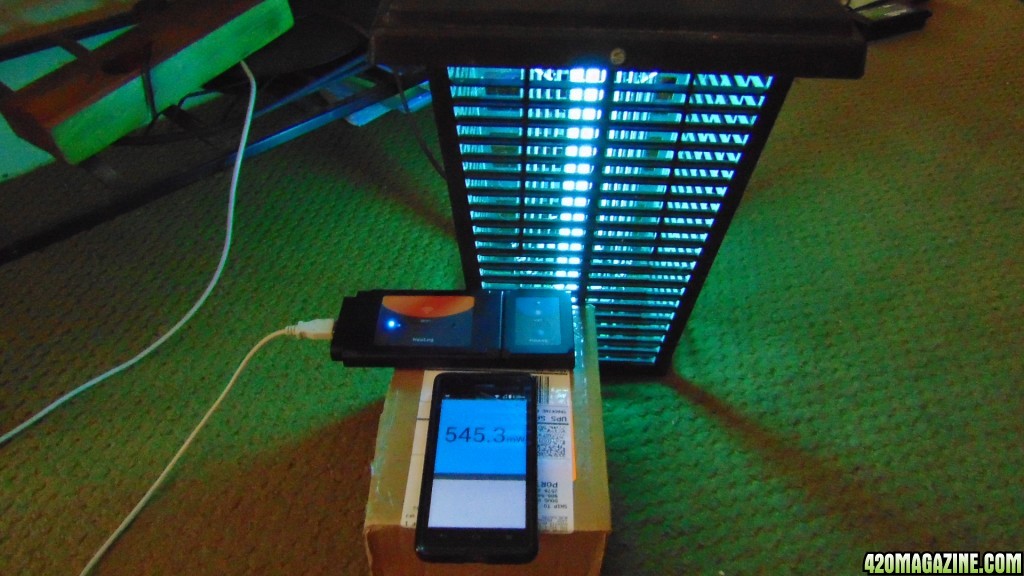LEDBud
Well-Known Member
Bug zapper UVB output measured
Today's evening sun's uvb output measured 67 mw/m2
Wiki has the Sun's uvb output measured @ 74mw/m2
It has a 10 inch dual tube 85va draw florescent type bulb
The UVB strength reached over 580mw/m2 but the photo was under exposed.
This is more then 7x stronger then the sun uvb m/2 output

it reads 545.3 mw/m2
I am going to remove the cage and hang it in the tent in between two budding plants
to wikis uvb page
Ultraviolet index - Wikipedia, the free encyclopedia
Today's evening sun's uvb output measured 67 mw/m2
Wiki has the Sun's uvb output measured @ 74mw/m2
It has a 10 inch dual tube 85va draw florescent type bulb
The UVB strength reached over 580mw/m2 but the photo was under exposed.
This is more then 7x stronger then the sun uvb m/2 output
it reads 545.3 mw/m2
I am going to remove the cage and hang it in the tent in between two budding plants
to wikis uvb page
Ultraviolet index - Wikipedia, the free encyclopedia


